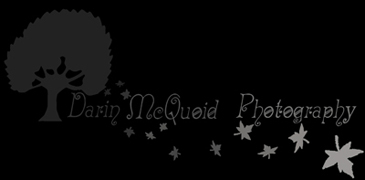
| Darin McQuoid | Blog | Reviews | Tutorials | River Directory |
Nikon's
classic
28mm shoot out.
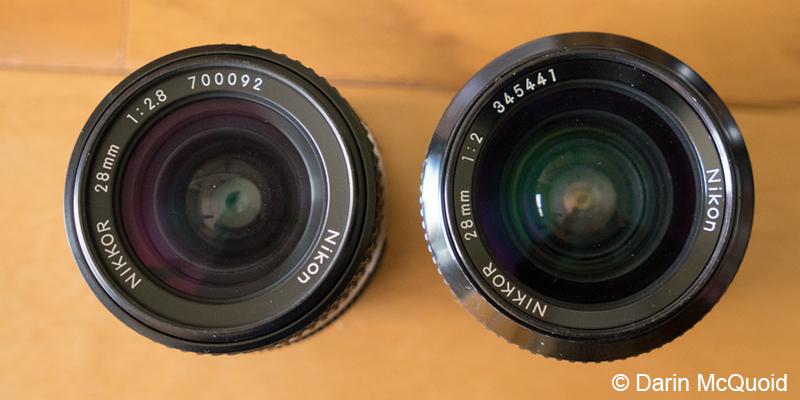
Nikon Nikkor 28mm f/2.8 AIS and 28mm f/2 AI

Nikon Nikkor 28mm f/2.8 AIS and 28mm f/2 AI
There are two 28mm Nikon lenses with stellar reputations. Starting production in 1981 the Nikkor 28mm f/2.8 AIS has 8 elements in 8 groups that can focus to 0.2 meters (7.8 inches) and weighs 8.8oz. You can buy it new for $540. Starting production in 1970 the Nikkor 28mm f/2 AI has 9 elements in 8 groups focusing down to 0.3 meters (11.8 inches) and weighs 12.5oz. Adjusted for inflation it would cost $950 new today. Thrown in the mix the Sony Zeiss 24-70mm f/4 FE started production in 2014, it has 12 elements in 10 groups and focuses down to 0.4 meters (15.7 inches) and weighs 15oz. $1,200 new.
The general online consensus is that the Nikkor 28mm f/2.8 AIS is sharper at wider apertures (especially in the corners) when focused closely while the Nikkor 28mm f/2 AI is better stopped down and at infinity. After reading way too many comments and reviews on both of these lenses that I have owned at different times, there was only one logical conclusion; own both and shoot side by side. This took longer than expected as two copies of the 28mm f/2 I bought had haze. I'm not sure if this is a common problem. The 28mm f2 is just slightly wider than the 2.8 ais.
It's worth taking look at the 5th copy of the Nikon 28mm f/2 I tried. Apparently this lens suffers from a lot of copy variation, which makes sense when you read various reviews across the internet.
First a look at infinity in full sunlight. Shot with the Sony A7 on a tripod with high enough shutter speeds to rule out movement (1/800-1/6400). Focus was done in the center wide open with no adjustments for focus shift. White balance set to sunlight. Mouse over images for the swap.
Our test scene, at f/2.8 the f/2 AI was about .2 brighter.

I find the 28mm f2 slightly better in the center.
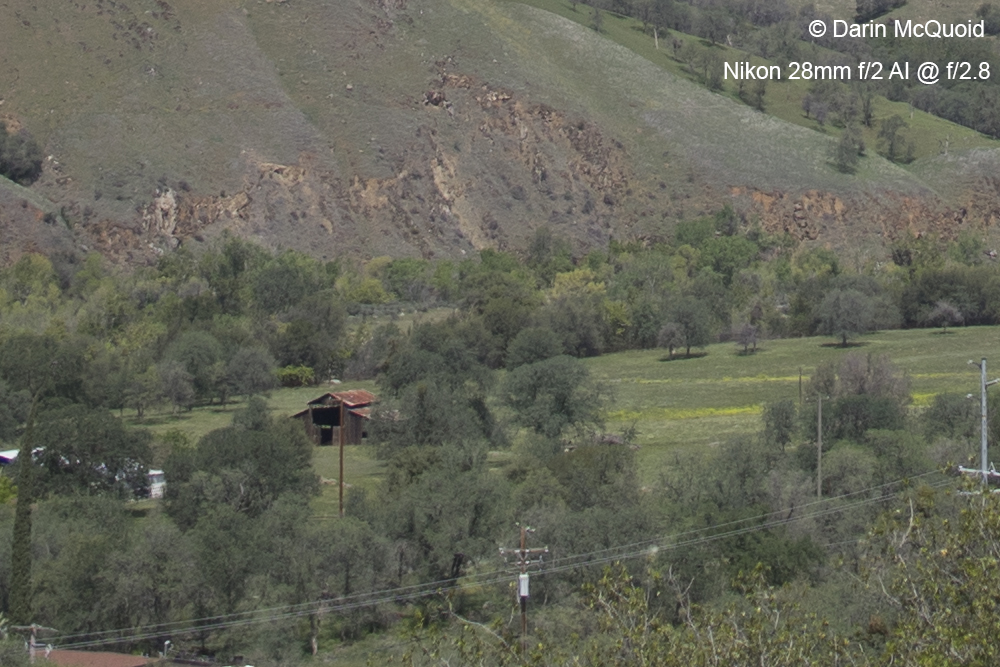
While in the corners the 28mm f/2.8 AIS is far superior.
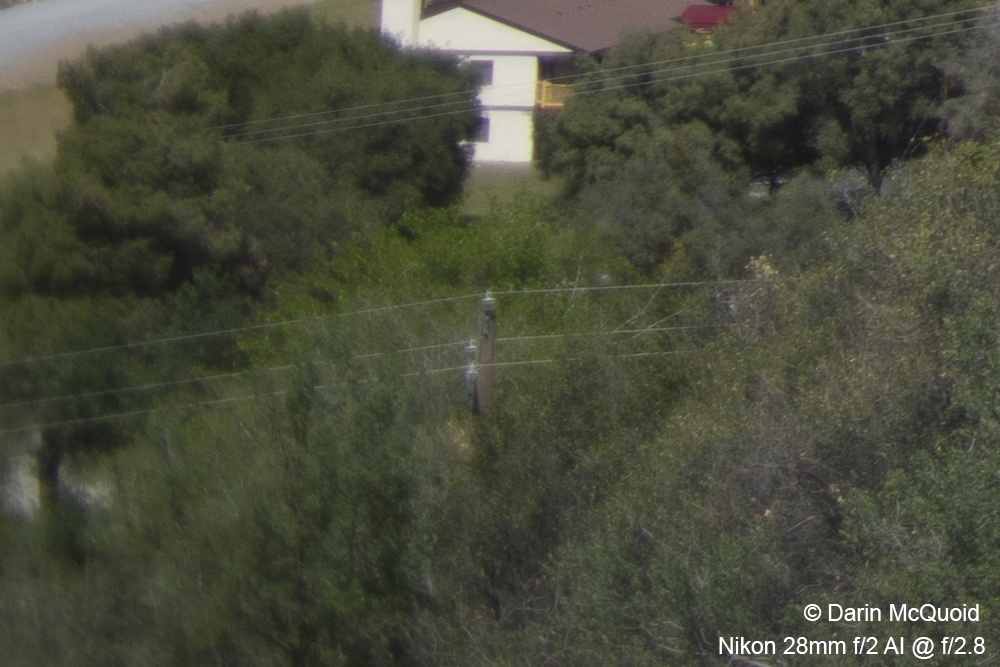
At f/4 the color and exposure on the Nikon lenses is identical, truly impressive. The Sony Zeiss is darker at f4.

At f/4 the 28mm f/2.8 AIS seems to have just a touch more contrast and less fine detail. Nothing that will be noticed in real world use.
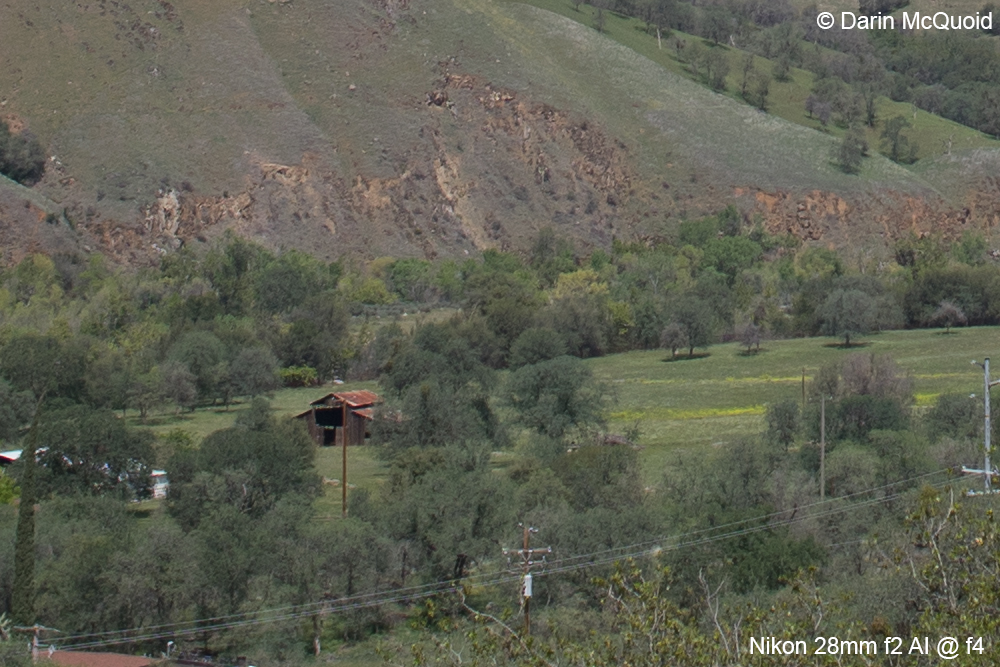
The exposure for the Sony Zeiss zoom was pulled up + .35 to match the Nikkors. Just a touch more fine detail, perhaps that famous Zeiss micro-contrast.

The 28mm f/2.8 AIS is still ahead in the corners.
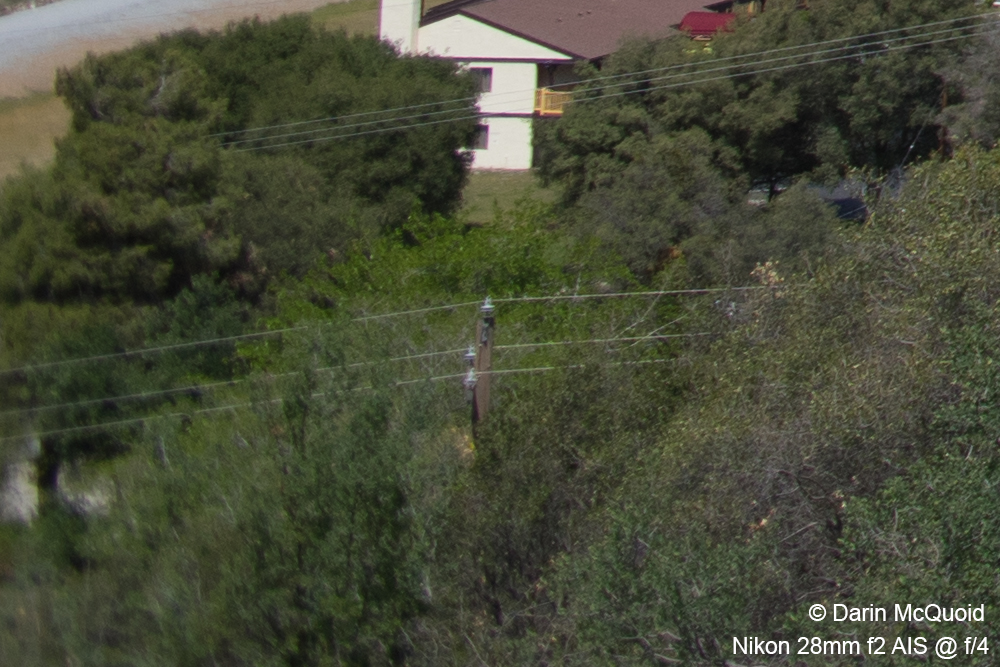
Now the Sony Zeiss zoom does things differently. While the extreme corner has more detail than either of the Nikkors, the loss of detail happens gradually and extends further into the frame. It also cheats and auto corrects the chromatic aberration.

Nothing has changed in the overall shot so I'm skipping it. The Sony zoom still needs +.30 exposure to match the Nikkors at f5.6, which are hard to tell apart.
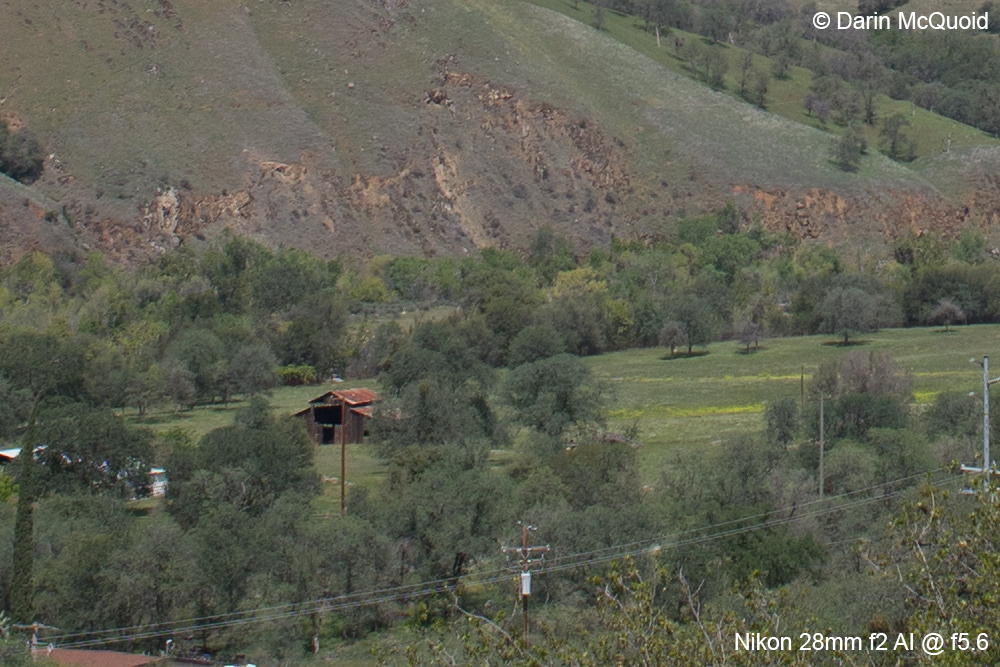
Slight color difference and maybe a touch more detail with the Sony zoom.

Both Nikkors improve at 5.6 in the corners but the 2.8 AIS says ahead.
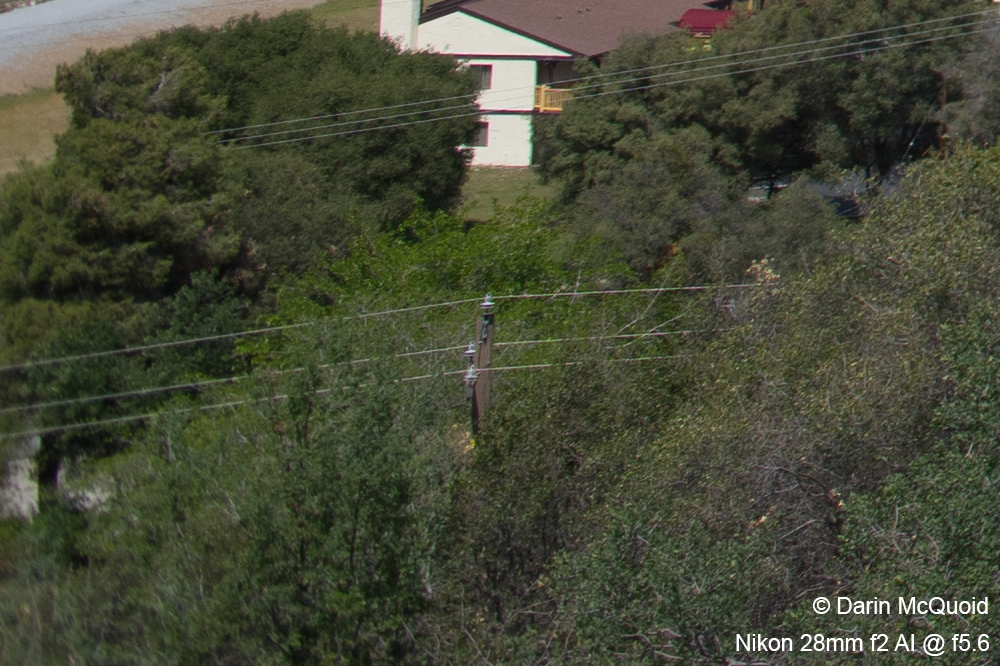
Oddly enough the Sony Zeiss 24-70mm f/4 FE doesn't really improve by stopping down. Except in the last 300 pixels of a 24mp image both Nikkors best it.
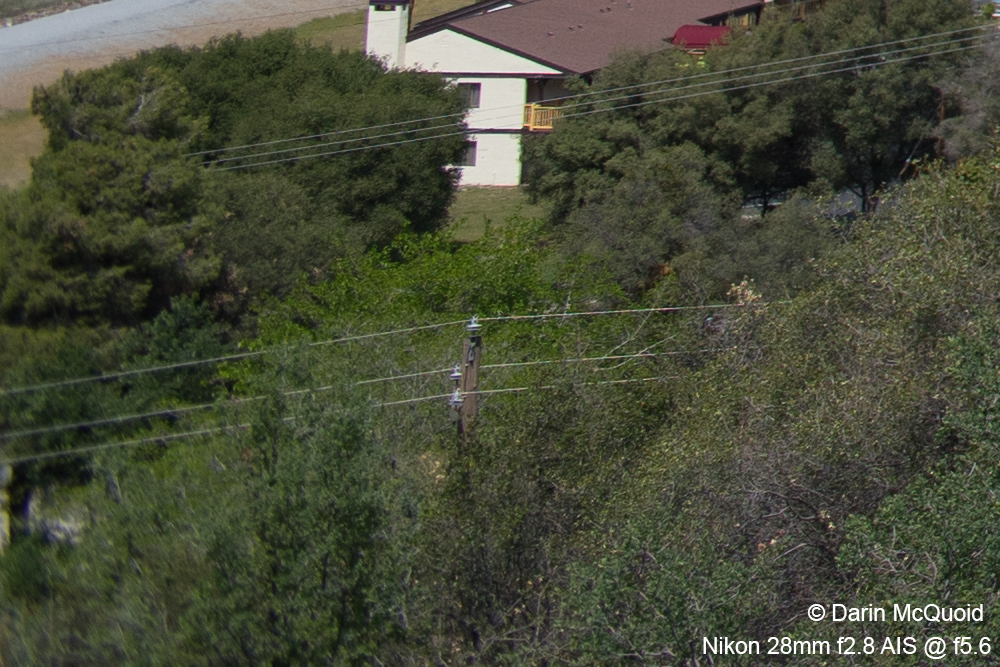
At f/8 the Sony Zeiss zoom needs +.25 exposure to match the Nikkors and diffraction starts to affect them all.


The Nikkor story continues, both improve a little but the very extreme corner isn't quite there. They both got some help from the automatic chromatic aberration fix in photoshop.

The Sony Zeiss, well it's a confusing lens.
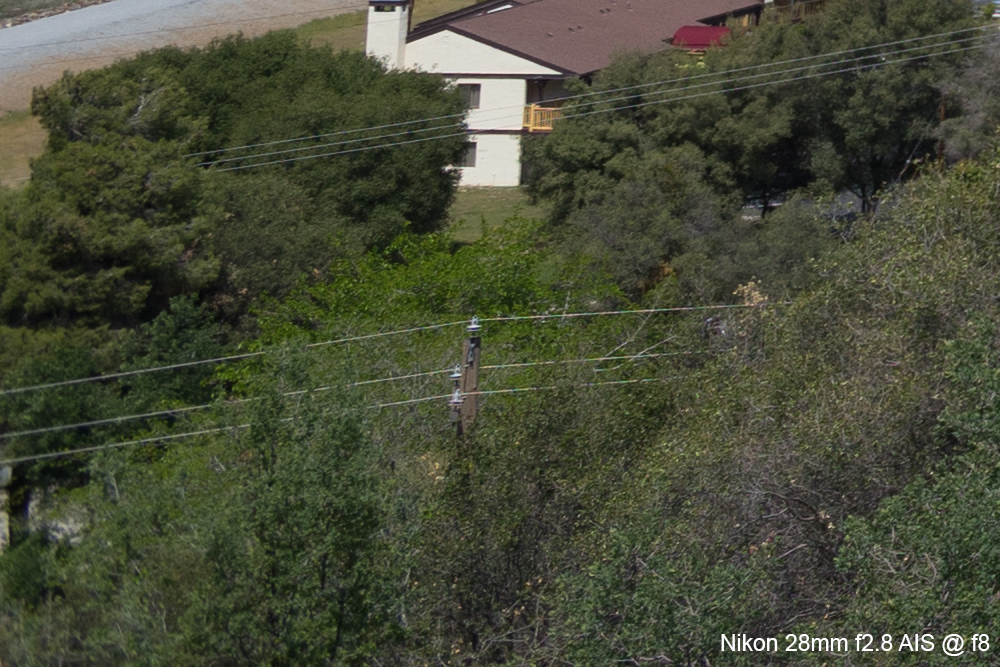
The Sony Zeiss zoom at f/4 and f/8. Is it me or does the extreme corner get better while the railing is worse, perhaps because the vignetting helps it have contrast at f/4?

Diffraction takes a toll at f/11 and they all look the same in the center. The Nikkors finally reach the very far corner.

As for the Zeiss it's rather embaressing.
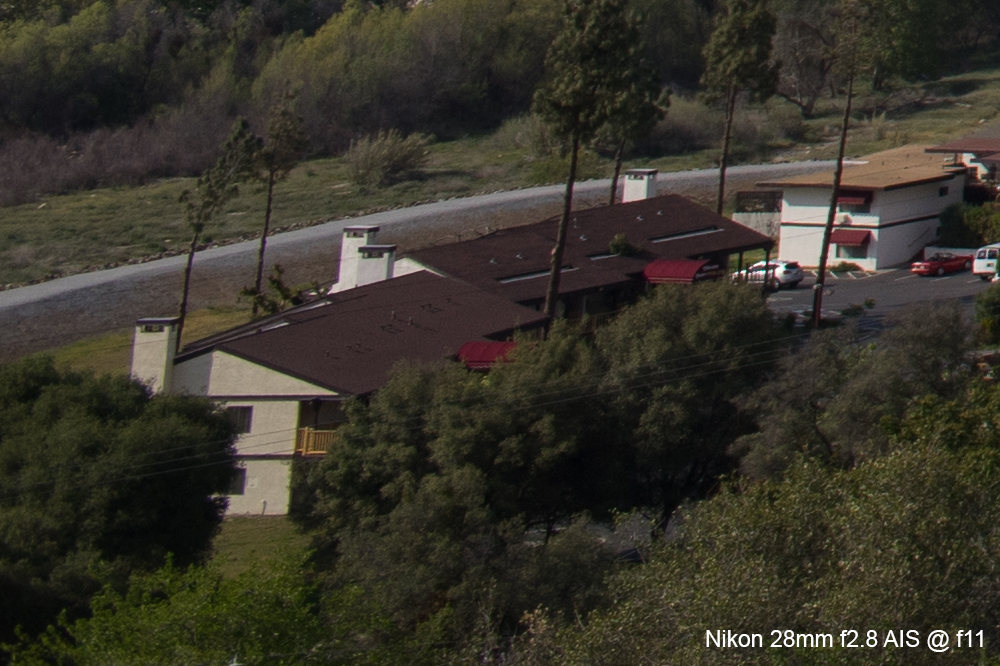
On to more in part two
HTML
Comment Box is loading
comments...